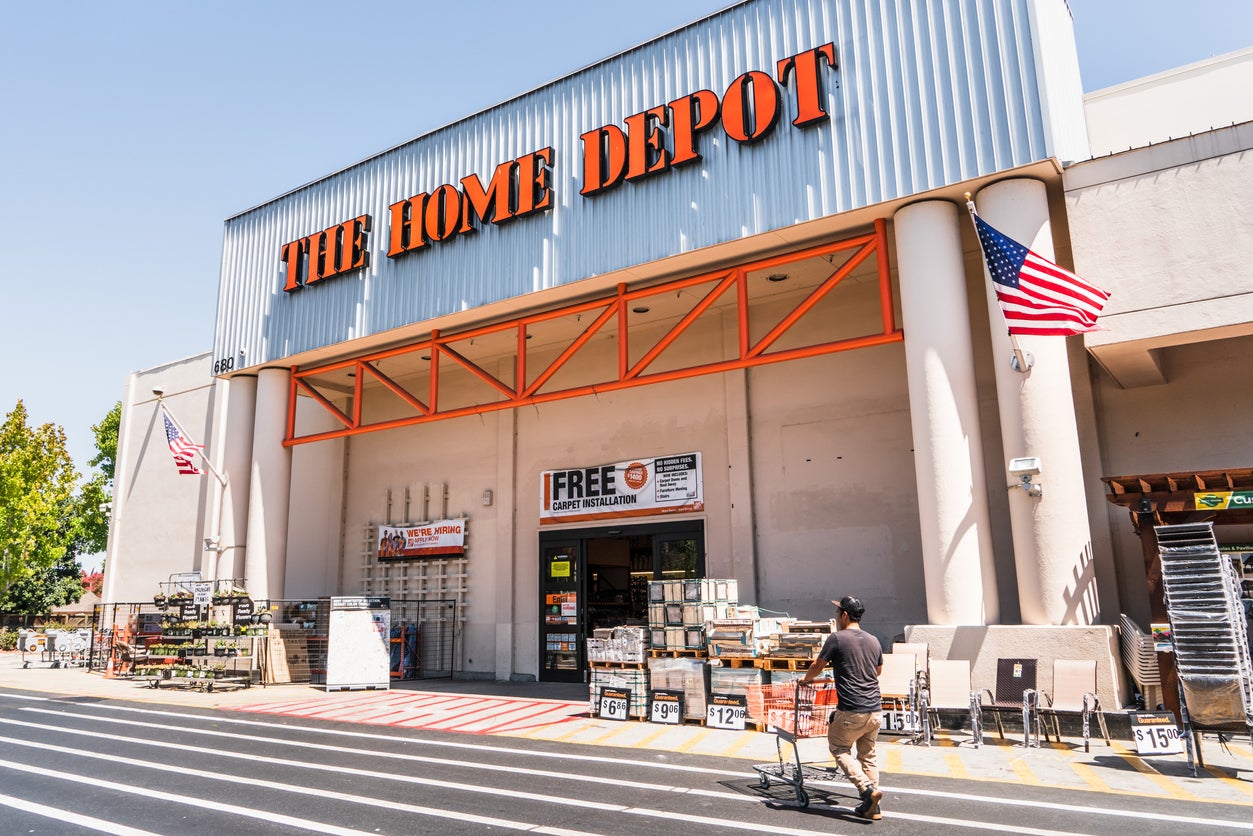The Only 10 Things You Need on Hand When Shopping at The Home Depot

Every successful home improvement project starts with a projected timeline, a target completion date, and a list of needed supplies. For those without a ton of DIY experience, though, it can be tough to figure out what’s needed and how much time the project may actually take without consulting detailed how-to guides that offer helpful materials lists. And that list of supplies is just half the shopping hurdle.
To make it over the other half of that hurdle, you also need to know the exact dimensions of the space you’re working on and have samples on hand to match colors, trim profiles, and hardware. The more you accomplish on that first trip to The Home Depot, the fewer times you’ll have to head back. The road to an easier, less stressful DIY project starts with making the most of that initial visit, so here’s a handy list of items many professionals wouldn’t head to the store without.
RELATED: 10 Home Depot Shopping Secrets Only the Savviest DIYers Know About
1. Tape Measure
The most basic and universally helpful item to have on hand is a tape measure. I keep a small one with me at all times in my purse, and in every vehicle we own, my contractor husband keeps one similar to this tape measure from Stanley—a favorite in our researched guide to the best tape measures.
Being able to quickly measure items in a store (and everywhere else) makes DIY life so much easier.
2. Trim Cut-off
Whether you are laying new flooring or adding wainscoting to a wall or two, there’s bound to be a few trim details—baseboard, shoe molding, or door casing—that will need to be fixed. Sometimes we get lucky and the trim easily separates from the wall and can be positioned back in place, but that’s a lottery-winning rare moment. For the rest of us DIYers, molding will need to be replaced, and many desire to replace it with trim that matches the rest of the house.
Before heading to the store with just the length of trim you’ll need listed in your mobile notes app, make sure to take a cut-off of the trim you want to match. Snapping a photo may be helpful, but it may not capture enough depth and detail to ensure a perfect match.
RELATED: How To: Remove Baseboard
3. Hardware and Fasteners
Perhaps you have mismatched door hardware in your kitchen or want to update the interior door hardware throughout the home so it all matches. These sound like fairly easy DIY projects. Such projects can get frustrating, however, if you end up with bags of the almost-but-not-quite-right finish or profile. That’s why, if you have one knob or pull on hand that you like, you should be sure to take a sample with you to the store.
This same method works with fasteners like screws and nails. If you’ve lost a screw during a project—say you’re building furniture or hanging window treatments—it’s easier to find the right fastener at the store if you go with a sample in hand.
RELATED: Nails vs. Screws: When to Use Each Fastener
4. Paint Name or Sample
It can be great fun for some homeowners and many of us designers to browse through a fan deck (paint chip book) or walk through the paint chip aisle in a store. Yet seeing the color in the store isn’t the same as seeing it on your walls at home. A color’s appearance changes depending on the lighting and the other colors in a space, and how a color looks in a photo is rarely an accurate representation of that color.
One way to expedite the paint selection process is to order a fan deck, like this color fan deck from Behr at The Home Depot and then try a few peel-and-stick samples at home. We like this 15-pack of 9-inch by 12-inch samples by SureSwatch at The Home Depot.
If you order a few online and live with the colors for a couple of days, it’s easier to make a decision and get exactly what you need when you are at the paint counter.
RELATED: The Basics of Paint Selection
5. Dimensions of Walls for Paint
Many first-time DIYers don’t know how much paint they’ll need to cover a wall or to paint an entire room from ceiling to baseboard. There’s a simple way to figure it out: Just use the length and width of each surface (wall or ceiling) to find the area of each wall, and then total them up. Be sure to subtract the areas of openings like windows and doors.
It’s also helpful to know the total length of trim that will need to be painted. Take those numbers with you when you head out to the store.
RELATED: 5 Paint Colors That Make Your House Appear Dingy
6. Stained Wood
Even if you know the name of the stain that was used on wood flooring, furniture, or trim, it probably isn’t the same hue now as when it was originally stained. Over time, colors can fade and change. It’s best to carry a cut-off of the stained wood you need to color-match to the store, and be sure that the stain will be applied to the same species of wood.
7. Weight of Wall Art (or Mirrors)
It’s easy to hang artwork and mirrors when they are light, but it takes a whole other level of planning when they are heavy. Use a luggage scale to find the weight of the mirror or artwork, and then head to the store to buy hardware that’s appropriate for that weight. It’s particularly important to always make sure to hang a heavy object from a stud or use appropriately sized drywall anchors.
RELATED: Cool Tools: The Hands-Down Easiest Way to Hang Almost Anything
8. Dimensions of Appliances or Furniture
Redecorating a home can be a lot of fun, but it becomes stressful in a hurry without proper planning and plenty of measuring. While it’s easy to start ordering furniture and appliances, it’s a good idea to plan the “bones” of the spaces first, before you make any purchases. For example, it can be extremely challenging to plan a kitchen around a suite of already ordered appliances or to plan a small room around an oversize sofa or giant dining room table that were recently purchased.
For those who have been tempted to purchase finishes before fixtures, be sure to have information about all of the appliance sizes (length, width, height, door swing radiuses, and needed clearances) before heading to the store to sit down with a kitchen designer who will help you plan the cabinet configurations.
RELATED: The Best Kitchen Appliance Brands
9. Project Calculator Results
Whether you’re laying tile, putting up drywall, or putting down mulch, it’s important to figure out how much of these materials you’ll need before you leave home. To do this, you’ll need to take some measurements.
Without a fairly accurate estimate of the amount of tile, decking, pavers, or grass seed you’ll need, it’s almost guaranteed that you’ll make a return trip to the store, either to pick up more material or return unused items. The Home Depot offers several online calculators to help guide you through the needed measurements.
RELATED: 15 Tools Every First-Time Homeowner Needs
10. The Home Depot Mobile App
For frequent shoppers, The Home Depot mobile app is a helpful must. The app’s Store Mode lets users know what’s in stock and where in the store it’s located, down to the aisle, shelf, and bin. Use the app’s Image Search, Barcode Scanner, and Augmented Reality features to make shopping and designing spaces faster and easier.
RELATED: 10 Tips and Tricks for a Stress-Free Trip to Home Depot



















